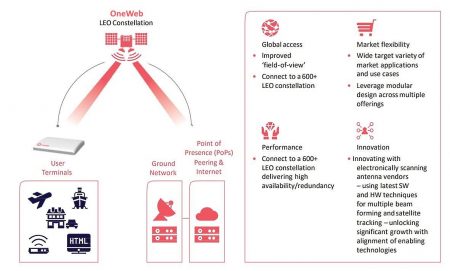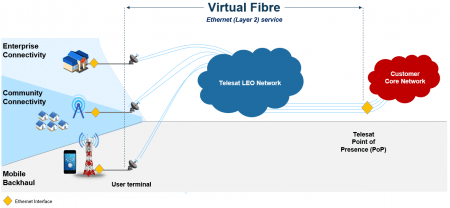What are community networks?
Community networks are networks often collectively owned and managed by a community for non-profit and community purposes. They are networks built and operated by a group to meet communication needs, like bringing affordable Internet to a community. Collectives, Indigenous communities or non-profit civil society organizations use them to communicate and connect under the principles of democratic participation of their members, fairness, gender equality, diversity.
The Internet is a global network. All interconnected systems require backhaul to operate. Backhaul is the first-mile or middle-mile infrastructure that brings the Internet to the community; users can then use last-mile technologies to deliver services like the Internet for web browsing, cell phone, and television over the connection to their homes, businesses, and other institutions.
The main focus of this paper is community networks in rural and remote locations particularly Indigenous communities in North America.
Backhauling traffic from a community network or a small ISP is a critical component of the network operation and delivery of service.
Fixed (Wired) Backhaul Solutions
Fiber-Optic Backhaul
Optical fiber is made of glass or plastic that can be used to transmit data in the form of light waves over long distances. It is generally the most preferred physical medium for the interconnection of critical network components, as well as for aggregating traffic from the edge of the network to the core. As the cost of fiber-optic cable has steadily come down in price and more efficient deployment solutions have come to the market, fiber-optic has become an increasingly popular option for service providers.
Wavelength Division Multiplexing (WDM) technology combines multiple optical signals on the same fiber, by carrying each signal on a different wavelength or color of light. WDM can be either Coarse WDM (CDWM) or Dense WDM (DWDM). CWDM provides 8 channels using 8 wavelengths, while DWDM uses close channel spacing to deliver much higher throughput per fiber. Modern systems can handle up to 160 signals, each with a bandwidth of 10 Gbps for a total theoretical capacity of 1.6 Tbps per fiber.[1] Optical fiber cable connecting multiple communities as well as businesses, libraries and other institutions will generate high volumes of traffic. In this case adopting WDM solutions will maximize the use of deployed optical fiber cables.
The relative cost of deployment depends on the amount of civil work required for hanging the fiber on poles, or directional-drilling, trenching or digging of conduits. The price of the fiber optic cable itself is not significant compared to the cost of labor and infrastructure development. Many organizations have called for “dig once” policies that would require communities to deploy dark fiber or conduit when roadwork is conducted to significantly reduce the cost of deployment. Another key consideration is that permission from relevant authorities may be needed for digging.
Copper (DSL) Backhaul
Copper lines are the traditional way to backhaul traffic from the subscriber access to the high-speed core network. Available Digital Subscriber Line (DSL) technologies can boost the bandwidth on the copper lines while supporting lower bandwidth for longer distances. ADSL2+ (Asynchronous Digital Subscriber Line) and VDSL2 (Very-high-bit-rate Digital Subscriber Line) technologies can allow the carriage of up to 100 megabits per second (Mpbs) at distances up to 0.25miles, and 40 Mpbs can be supported with ranges up to 0.625miles. In urban communities, DSL can be used to aggregate traffic from end user nodes (e.g. WiFi access points) to the closest core network node (or central office).
Where copper is already deployed, the cost of service is relatively not high. Distance limitations for high bandwidth service are the key challenge. If not already implemented, either optical fiber or wireless technologies could be used.
In summary, wired backhaul is typically the preferred solution in cases where the cost of digging the optical fiber can be covered, and the needed permissions for civil work are secured.
Wireless Backhaul Solutions
Satellite Backhaul
Satellite backhaul is typically deployed in rural or remote communities where fiber-optic backhaul is not reliable or available. While satellite backhaul provides great coverage suitable for remote areas, it traditionally suffers from communications delay and limited bandwidth on both traffic directions (to and from the end-user).
Satellite vendors have improved bandwidth and latency by implementing technologies such as different caching solutions, where content is stored in locations closer to the end user. These approaches allow for satellite solutions supporting 150 Mbps on the downlink and 10 Mbps on the uplink. Satellite backhaul uses licensed spectrum (Table 1). For information on spectrum please see the Internet Society’s “Innovation in Spectrum Management” report.[2]
Time to deploy a satellite service could be significant, particularly in remote communities. Also, service and maintenance of the local equipment are challenging due to the typical remote location of the equipment. The cost of bandwidth is relatively high compared to backhaul over fiber optic and the available bandwidth per satellite connection is relatively quite limited. The key benefit is the reach of satellite service to remote communities.
Low Earth Orbit (LEO) Satellite Backhaul
The advent of Low Earth Orbit satellite solutions has greatly improved the communications latency (i.e. end-to-end delay). In 1997, the United Nations’ International Telecommunications Union (ITU) opened nearly seven GHz of the Ku-Band (12–18 GHz) spectrum globally to connect the world through future satellite systems.
More recently, several initiatives have started to explore the viability of utilizing large numbers of satellites (300 to 500 for global coverage) positioned at significantly lower orbits (500-1200 km instead of 36,000 km) to provide reliable communication services. Being at lower orbits significantly reduces the roundtrip delay.
OneWeb LEOs
OneWeb is building a constellation of LEO satellites to bridge the digital divide. Its constellation design includes an initial 650 satellites in 12 polar planes at 1200 km, and will grow to 1,980 satellites over time to add additional capacity.[3]
OneWeb is headquartered in London, U.K. and has offices in McLean, VA, Cocoa Beach, Florida, California and more. OneWeb has a Satellite Mission Control Center and Ground Network Control Center in both London and McLean, VA to fly and manage the constellation. OneWeb also has ground stations positioned around the world for monitoring and controlling the satellites. Their locations include Norway, Canada, and Italy and more coming. More than 40 ground stations will be responsible for connecting the entire OneWeb constellation to the terrestrial network including the Internet once it is fully launched.

Figure 1. OneWeb LEO Solution[4]
The OneWeb LEO solution is designed to deliver high-speed, low-latency services at speeds of more than 400 Mbps, enabling fast real-time two-way Internet access and video streaming in Full HD from Space.[5]
Telesat LEO
Telesat provides a state-of-the-art satellite constellation of highly advanced LEO satellites in low-earth-orbit (~1,000 km from the earth; ~35 times closer than traditional satellites) that aims to integrate with terrestrial networks seamlessly. The global network will deliver a fiber quality throughput (Gbps links; low latency 2-4 msec) with global coverage. The system allows for dynamic allocation of capacity based on actual demand.[6]
Telesat’s global Low Earth Orbit network will seamlessly integrate with terrestrial networks across the world through roughly 50 Landing Stations distributed globally. With ~300 advanced satellites orbiting ~1,000 km from Earth, Telesat Ka-band LEO will deliver terabits of affordable, high-performing capacity to any spot on the earth where there is demand.[7]

Figure 2. Telesat LEO Global Network
Designed to be compliant Multiservice Ethernet Forum’s (MEF) specifications, Telesat LEO will provide a plug and play Layer 2, Carrier Ethernet transport service to connect remote customer terminals (remote community mobile and enterprise sites, etc) to urban PoPs.[8] It will deliver a fiber-quality high throughput (Gbps links) and low latency (30-50 ms) broadband solution (Figure 2).

Figure 3. Telesat LEO’s Virtual Fibre Network
A technical comparison between the characteristics of key Low Earth Orbit satellite constellation systems, conducted by researchers from the Massachusetts Institute of Technology (MIT) in 2018, concluded that the Telesat system provides superior efficiency in terms of average Gbps/satellite.[9]
In summary, LEOS will provide very attractive connectivity and backhaul services to remote communities delivering higher bandwidth and lower delay than traditional satellite services. Deployment time frames for LEOS would be similar to those of satellite, while the cost of service is expected to be lower given the number of constellations providing coverage.
Microwave Backhaul
Microwave is a well-proven technology for traffic backhaul; it is low-cost, can be deployed in a matter of days, and support a range of up to several miles. Technical solutions provide microwave with high bandwidth capability (hundreds of Mbps).
Line of Sight (where no hills or mountains impede direct propagation of the microwave signal between the sending and receiving antennas) has been a requirement for the deployment of microwave links. Operating at higher frequencies (e.g. E-band) allow for non-Line of Sight deployment, over shorter distances.
Microwave backhaul solutions are typically in the 7 GHz to 40 GHz bands (Table 1), as well as the higher microwave bands, such as V-band (60 GHz) and the E-band (70/80 GHz) (Table 2).
A key consideration for microwave backhaul is that the 7-40GHz frequency range is a licensed range, requiring regulatory approval (license) to operate.
In summary, microwave backhaul is an attractive solution in case the line of sight is available and the license to the needed spectrum is secured.
Other Wireless Solutions
WiFi (unlicensed spectrum at 2.4GHz or 5GHz) as well as TV White Spaces (unused broadcasting frequencies in the wireless spectrum) are other solutions for wireless backhaul that have seen rising adoption in rural community networks.[10]
Conclusions
Fiber optic cable is the preferred backhaul solution whenever feasible. In remote or rural communities satellite service may be the only available backhaul solution. The advent of LEOS promises to provide better coverage and higher bandwidth capabilities to rural and remote communities.
Appendix available in the PDF version.
Endnotes
[1] GSMA, Mobile Backhaul Options, Nov. 2018, https://www.gsma.com/spectrum/resources/mobile-backhaul-options/
[2] Internet Society, Innovations in Spectrum Management, https://www.internetsociety.org/wp-content/uploads/2019/03/InnovationsinSpectrumManagement_March2019-EN-1.pdf
[3] MIT, “A Technical Comparison of Three Low Orbit Satellite Constellation Systems to Provide Global Broadband”, Portillo I. et al, International Astronautical Congress 2018, http://www.mit.edu/~portillo/files/Comparison-LEO-IAC-2018-slides.pdf
[4] OneWeb, https://www.oneweb.world/technology#video
[5] OneWeb, https://www.oneweb.world/technology#video
[6] Telesat, https://www.telesat.com/services/leo/why-leo
[7] Telesat, https://www.telesat.com/services/leo/why-leo
[8] Telesat, https://www.telesat.com/services/leo/why-leo
[9] MIT, “A Technical Comparison of Three Low Orbit Satellite Constellation Systems to Provide Global Broadband”, Portillo I. et al, International Astronautical Congress 2018, http://www.mit.edu/~portillo/files/Comparison-LEO-IAC-2018-slides.pdf
[10] Internet Society, Innovations in Spectrum Management, https://www.internetsociety.org/wp-content/uploads/2019/03/InnovationsinSpectrumManagement_March2019-EN-1.pdf
[11] GSMA, Mobile Backhaul Options, Nov. 2018, https://www.gsma.com/spectrum/resources/mobile-backhaul-options/
[12] GSMA, Mobile Backhaul Options, Nov. 2018, https://www.gsma.com/spectrum/resources/mobile-backhaul-options/
